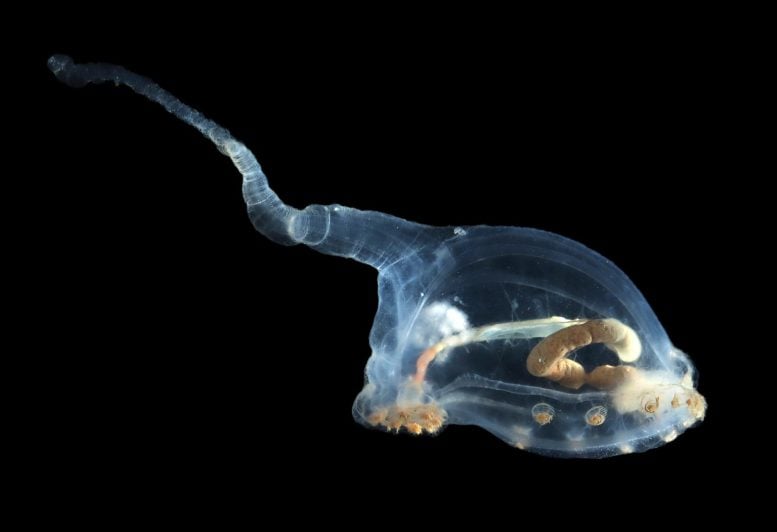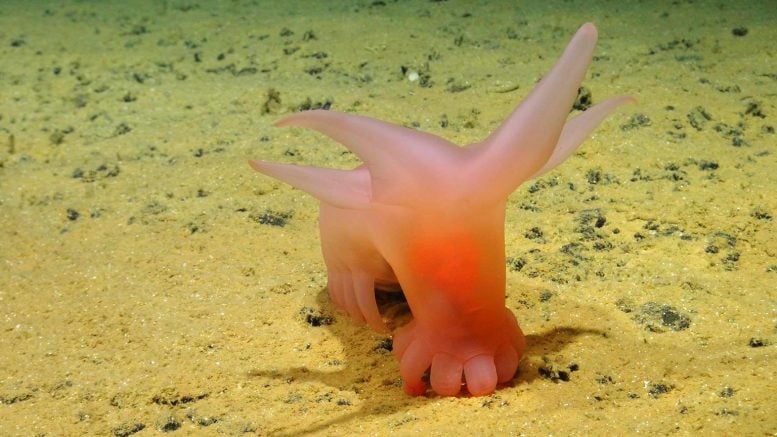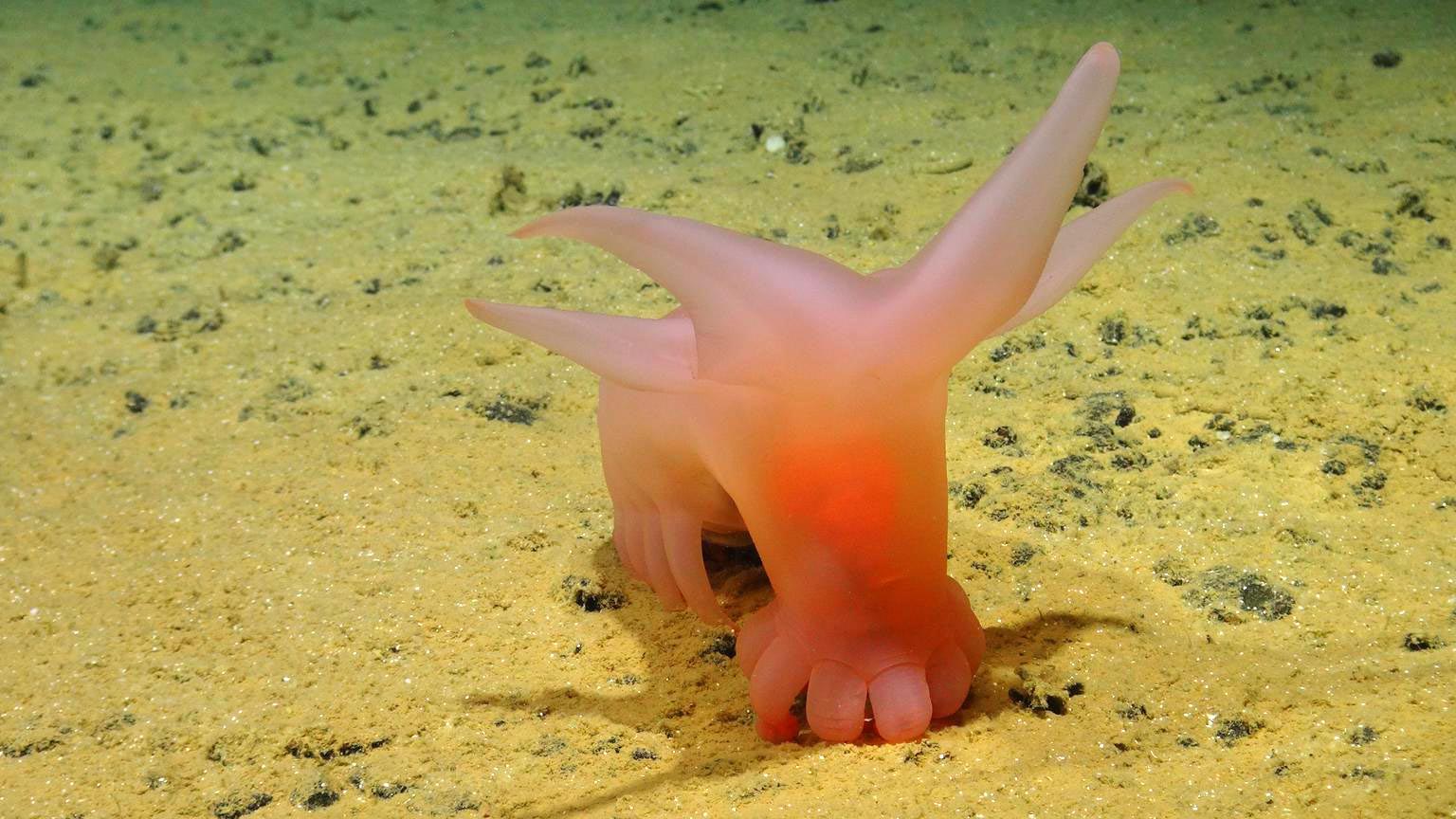Sea anemones catch small animals floating along the bottom. This species belongs to the order Actiniaria. Credit: SMARTEX/NHM/NOC
Transparent sea cucumbers, pink sea pigs and bowl-shaped sponges are some of the fascinating animals discovered during a deep-sea expedition to the Pacific Ocean’s Abyssal Plains.
A 45-day research expedition to the Clarion Clipperton Zone between Mexico and Hawaii in the eastern Pacific ended in March. One of the scientists on board the British research vessel James Cook was Thomas Dahlgren, a marine ecologist from the University of Gothenburg and the NORCE research institute.
“These areas are the least explored areas on earth. It is estimated that only one in ten animals occurs kind Life down here has been described by science,” he says.

This sea cucumber with transparent body belongs to the family Elpidiidae and is called ‘unicummber’. You can clearly see his intestines and that he has eaten sediment. We can only guess what the long tail is for, but probably for swimming. Credit: SMARTEX/NHM/NOC
The area studied is part of the Abyssal Plains, deep-sea areas at a depth of 3,500 to 5,500 meters. Although they cover more than half of the Earth’s surface, very little is known about their fascinating animal life.
“This is one of the few cases where researchers can be involved in discovering new species and ecosystems in the same way as in the 18th century. It is very exciting,” says Thomas Dahlgren.
Abyssal plains
The ocean floor, which is between 3,500 and 5,500 meters deep, is called the Abyssal Plains. Despite the name, it is not a completely flat landscape. There are numerous ridges and small seamounts that can rise several hundred meters above the ocean floor, but in most cases this is not enough to be shown on existing maps.
The environment on these plains is extremely poor in nutrients. The nutrients present are remnants of hot springs located further away, or are excreted by occasional whale carcasses that have sunk to the bottom. Otherwise, the nutrients come from the productive sea surface several kilometers higher, where only about one percent reaches the ocean floor as marine snow.
Sea cucumbers and glass sponges
The animals that live in these deep-sea areas have adapted to a life with very little nutrition. Most feed on organic debris, known as marine snow, that falls from the more productive area close to the surface. As a result, this animal population is dominated by filter feeders, such as sponges, and sediment feeders, such as sea cucumbers.
“Due to the lack of food, individuals live far apart, but the species diversity in the area is surprisingly high. We see a lot of exciting specialized adaptations in the animals in these areas,” says Dahlgren.

One of the species discovered during the expedition was the pink sea pig, or ‘Barbie Sea Pig’ as it is known in English. It got its name because of its pink color and small feet. Credit: SMARTEX/NHM/NOC
Using a remotely operated vehicle (ROV), the research team photographed life in the deep sea and took samples for future research. One of the species caught on camera was a bowl-shaped glass sponge, an animal believed to have the longest lifespan of any creature on Earth. They can live up to 15,000 years.
Another species discovered during the expedition was a pink sea pig, a sea cucumber of the genus Amperima. The species moves very slowly with its tube feet over the desolate plains in search of nutrient-rich sediments. The growths on the front of the underside are new feet that are used to put food in the mouth.
“These sea cucumbers were among the largest animals found during this expedition. They act like vacuum cleaners on the ocean floor and specialize in finding sediment that has passed through as few stomachs as possible,” says Dahlgren.
Threatened by mining
The aim of the expedition was to map the biodiversity of the area, where deep-sea mining of rare metals used in solar panels, electric car batteries and other green technologies is planned. Several countries and companies are waiting for permission to mine these metals bound to mineral nodules lying on the ocean floor. The scientists want to know more about how mining can affect the ecosystem, record existing species and discover how the ecosystem is organized.
“We need to know more about this environment to protect the species that live here. Today, 30% of these marine areas are protected and we need to know if this is enough to ensure that these species are not threatened with extinction,” says Dahlgren.
